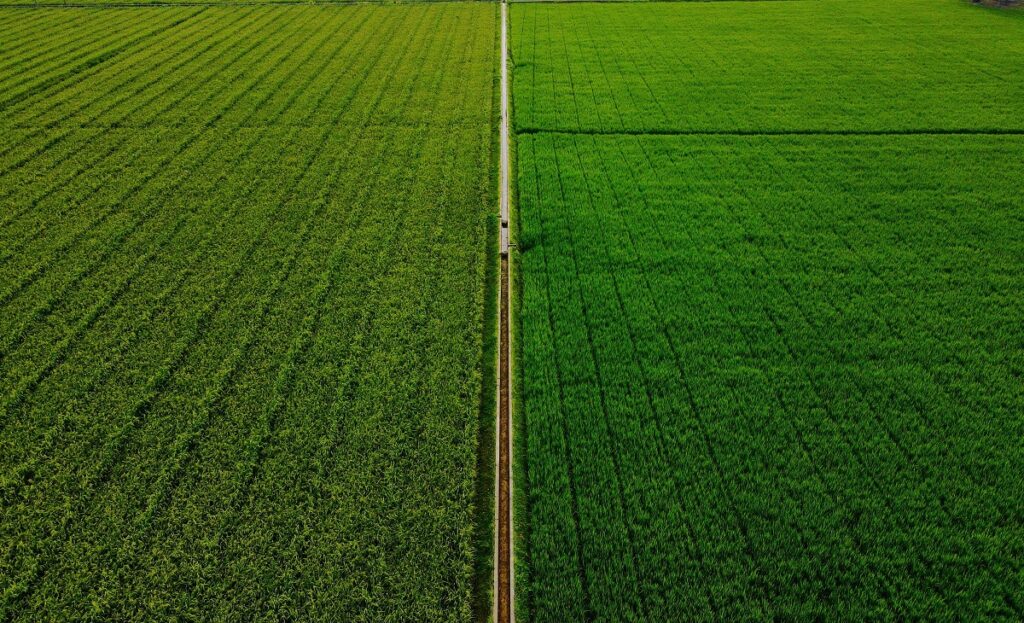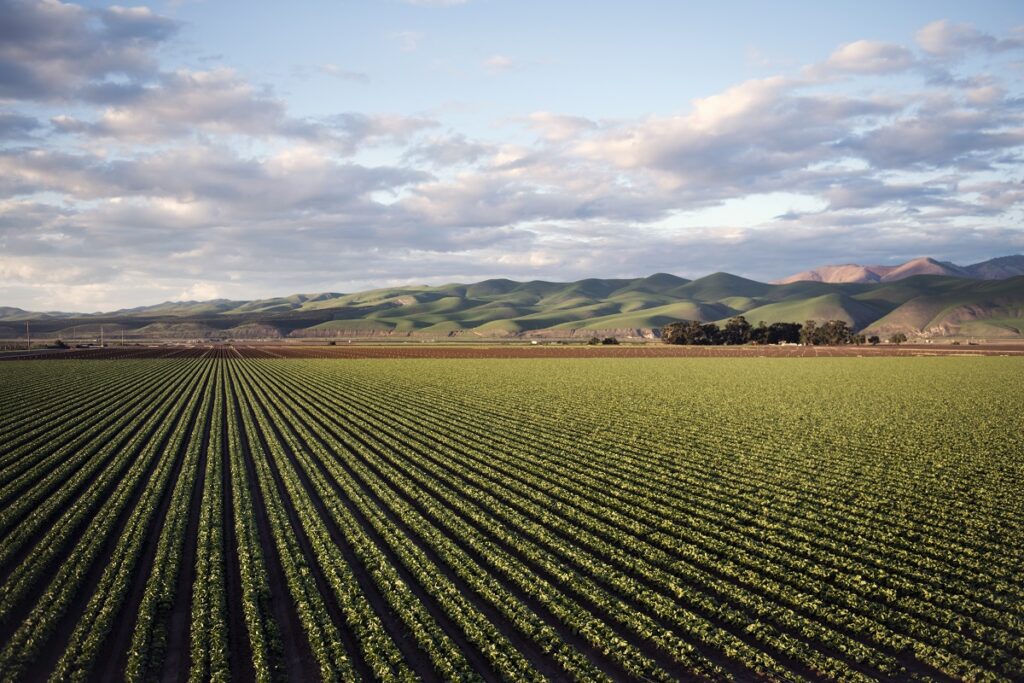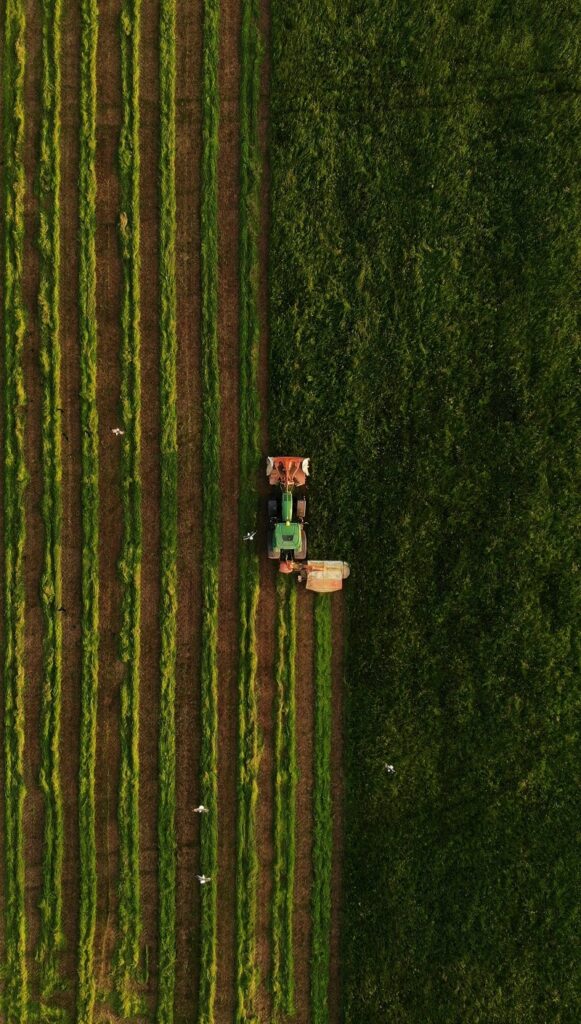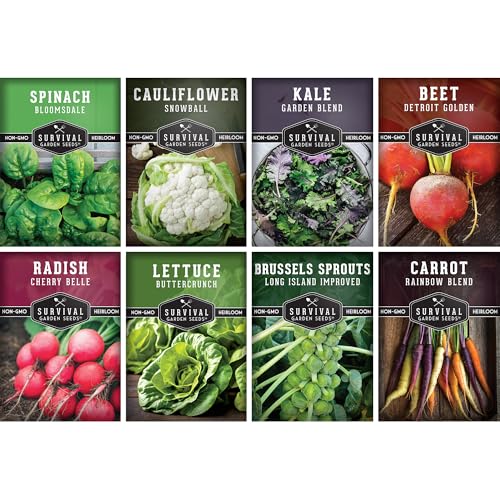Introduction
Cover crops represent one of the most powerful tools available to farmers and gardeners for building soil health, preventing erosion, and creating sustainable, productive growing systems. By keeping soil covered with living plants or plant residues throughout the year, you can naturally improve fertility, suppress weeds, retain moisture, and support beneficial soil organisms—all while reducing reliance on synthetic inputs.
Whether you’re managing a large-scale commercial operation, a small market garden, or a backyard vegetable plot, implementing cover crops transforms bare soil into a living, productive ecosystem that works for you between cash crops. This ancient practice has seen renewed interest as modern agriculture recognizes the critical importance of soil health for long-term productivity and environmental stewardship.
This comprehensive guide explains what cover crops are, their multiple benefits, the best species for different goals, and practical implementation strategies for integrating cover crops into your operation. Discover how this simple practice can revolutionize your soil management and crop performance.

What Are Cover Crops?
Cover crops are plants grown primarily to benefit the soil rather than for harvest and sale. They serve as “living mulch” when actively growing or provide protective residue after termination.
Defining Characteristics
Primary Purpose: Soil improvement and protection rather than commodity production
Key Functions:
- Protect soil from erosion (wind and water)
- Add organic matter when decomposed
- Cycle nutrients from deep soil layers
- Suppress weeds through competition and allelopathy
- Support beneficial soil organisms
- Improve soil structure and water infiltration
Growing Windows:
- Between cash crops (fallow periods)
- During off-season (winter in temperate climates)
- Understory planting (with main crops)
- Long-term pasture or perennial systems
Cover Crops vs. Green Manure
While often used interchangeably, there’s a subtle distinction:
Cover Crops: Broad term for any crop grown primarily for soil benefit, may or may not be incorporated
Green Manure: Specifically refers to cover crops that are incorporated into soil while still green to add nutrients and organic matter
Practical Reality: Most farmers use the terms synonymously, and many cover crops serve both functions.
Living Mulch Concept
Living Mulch: Cover crops maintained as living ground cover, often grown simultaneously with cash crops
Applications:
- Orchard understories
- Alley cropping systems
- Interseeded into standing crops
- Perennial ground covers in permanent plantings
Benefits:
- Continuous soil coverage
- Ongoing nutrient cycling
- Permanent habitat for beneficials
- Reduced need for mechanical cultivation
Benefits of Cover Crops: Why Every Farm Should Use Them
The advantages of cover crops extend far beyond simple soil protection, offering economic, environmental, and agronomic benefits.
1. Erosion Prevention and Soil Conservation
Soil erosion costs American agriculture billions annually in lost productivity and environmental damage. Cover crops provide the most effective, natural erosion control.
How Cover Crops Prevent Erosion:
Root Systems:
- Hold soil particles in place
- Create channels for water infiltration
- Bind soil even after plant death
Canopy Protection:
- Intercepts rainfall before it hits soil
- Reduces raindrop impact energy by 90%+
- Slows water flow across soil surface
- Reduces wind velocity at ground level
Erosion Reduction Statistics:
- Water erosion: 50-90% reduction vs. bare soil
- Wind erosion: Up to 80% reduction
- Topsoil loss: From 5 tons/acre to less than 0.5 tons/acre
Critical Application: Highly erodible land (HEL) designated by USDA-NRCS requires conservation measures; cover crops meet compliance requirements while improving productivity.
2. Soil Fertility Enhancement
Cover crops naturally build soil fertility through multiple mechanisms.
Nitrogen Fixation (Legume Cover Crops):
Leguminous cover crops partner with Rhizobium bacteria to convert atmospheric nitrogen into plant-available forms.
Nitrogen Contribution by Species:
- Hairy vetch: 80-150 lbs N/acre
- Crimson clover: 70-120 lbs N/acre
- Austrian winter pea: 80-130 lbs N/acre
- Red clover: 70-150 lbs N/acre (depending on stand duration)
Value: Equivalent to $50-120 per acre in nitrogen fertilizer at current prices.
Nutrient Cycling (All Cover Crops):
Deep-rooted cover crops access nutrients below cash crop root zones and bring them to the surface.
Nutrient Scavenging:
- Prevents nitrogen leaching during fallow periods
- Captures residual fertilizer from previous crops
- Mines subsoil nutrients (phosphorus, potassium, calcium)
- Releases nutrients upon decomposition
Example: Radishes (tillage radish) can scavenge 100+ lbs/acre of nitrogen that would otherwise leach away.
Organic Matter Addition:
Biomass Production:
- 2,000-8,000 lbs/acre dry matter typical
- Equals 0.5-2 tons organic matter per acre
- Increases soil organic carbon over time
- Improves soil structure and water-holding capacity
Long-Term Impact: Studies show 0.1-0.3% soil organic matter increase per year with consistent cover crop use.
3. Water Management and Moisture Retention
Cover crops dramatically improve soil’s relationship with water.
Increased Infiltration:
Cover crop roots create macropores that allow water to penetrate soil quickly.
Infiltration Improvements:
- 2-6x faster water infiltration rates
- Reduced runoff (50-70% reduction)
- Better drought resilience
- Improved irrigation efficiency
Practical Impact: Fields with good cover crop history can absorb 2+ inches of rain in heavy storms without runoff, while bare soil runs off after ½ inch.
Moisture Conservation:
Surface Residue Benefits:
- Reduces evaporation by 30-50%
- Moderates soil temperature extremes
- Extends available moisture for cash crops
- Reduces irrigation requirements
Enhanced Water Holding:
- Each 1% organic matter increase = 20,000 gallons water storage per acre
- Cover crops gradually build water-holding capacity
- Critical in drought-prone regions
4. Weed Suppression
Cover crops control weeds through multiple mechanisms, reducing herbicide dependence.
Physical Suppression:
- Dense canopy blocks light
- Rapid growth outcompetes weeds
- Physical barrier prevents germination
- Thick residue mulch after termination
Allelopathy (Chemical Suppression):
Some cover crops release compounds that inhibit weed seed germination and growth.
Allelopathic Species:
- Cereal rye: Highly allelopathic, suppresses many summer annuals
- Sorghum-sudangrass: Broad suppression
- Oats: Moderate allelopathy
- Buckwheat: Quick canopy, good suppression
Weed Reduction: 50-90% weed pressure reduction in following cash crops with proper management.
Economic Benefit: Reduced herbicide costs ($20-60/acre savings) and reduced cultivation needs.
5. Enhanced Soil Biology
Cover crops feed and shelter beneficial soil organisms, creating a thriving soil food web.
Microbial Activity:
- Root exudates feed bacteria and fungi
- Decomposing residues provide carbon source
- Diverse cover crop mixes support diverse microbes
- Mycorrhizal fungi networks expand
Beneficial Organisms:
- Earthworms: Increase 2-5x with cover crops
- Predatory nematodes: Control pest nematodes
- Nitrogen-fixing bacteria: Improve availability
- Disease-suppressive organisms: Reduce pathogen populations
Soil Structure:
- Microbial glues bind soil particles
- Earthworm channels improve drainage
- Root channels create biopores
- Aggregate stability increases
Long-Term Impact: Building soil biology takes 3-5 years of consistent cover cropping but creates resilient, self-regulating soil ecosystems.
6. Pest and Disease Management
Strategic cover crop use disrupts pest and disease cycles.
Pest Habitat:
- Beneficial insects overwinter in residues
- Predators and parasitoids find refuge
- Diverse plantings support natural enemies
Disease Suppression:
- Biofumigant cover crops (mustards, radishes) release compounds that suppress soil-borne diseases
- Crop rotation effect breaks disease cycles
- Competitive exclusion reduces pathogen populations
Nematode Management:
- Certain mustards suppress harmful nematodes
- Marigolds (sometimes used as cover) reduce nematode populations
- Non-host cover crops starve pest nematodes

Types of Cover Crops: Choosing the Right Species
Selecting appropriate cover crops depends on climate, season, goals, and rotation sequence.
Legume Cover Crops (Nitrogen Fixers)
Legumes partner with bacteria to fix atmospheric nitrogen, reducing fertilizer needs.
Cool-Season Legumes:
Hairy Vetch:
- Winter-hardy (to -10°F)
- 80-150 lbs N/acre
- Plant: Late summer/early fall
- Excellent for no-till systems
- Can overwinter in zones 5-9
Crimson Clover:
- Moderate winter hardiness (to 10°F)
- Fast-growing, beautiful red flowers
- 70-120 lbs N/acre
- Good for pollinators
- Self-seeds if allowed to mature
Austrian Winter Pea:
- Cold-tolerant (to 10°F)
- Fast spring growth
- 80-130 lbs N/acre
- Mix with small grains for support
Red Clover:
- Perennial, can be maintained 2+ years
- 70-150 lbs N/acre annually
- Good for orchard understories
- Excellent forage quality
Warm-Season Legumes:
Cowpeas:
- Heat and drought tolerant
- 80-150 lbs N/acre
- Fast-growing summer cover
- Good for Southern regions
Sunn Hemp:
- Tropical legume gaining popularity
- 100-150 lbs N/acre in 60-90 days
- Suppresses nematodes
- Massive biomass production
Soybeans:
- Dual-purpose (cover or grain)
- Moderate nitrogen contribution
- Good for late summer planting
Grass Cover Crops (Biomass Builders)
Grasses produce high biomass, scavenge nutrients, and create allelopathic residues.
Cool-Season Grasses:
Cereal Rye (Winter Rye):
- Most cold-hardy cover crop (to -30°F)
- Excellent biomass (3,000-6,000 lbs/acre)
- Strong weed suppression
- Scavenges 50-100 lbs N/acre
- Extensive root system
- Industry standard for fall planting
Oats:
- Fast fall growth
- Winter-kills in cold climates (convenient for spring planting)
- Moderate biomass (2,000-4,000 lbs/acre)
- Less allelopathic than rye (easier spring planting)
Annual Ryegrass:
- Rapid establishment
- Dense ground cover
- Can overwinter in zones 6-9
- Good for erosion control
- Allelopathic properties
Triticale:
- Wheat-rye hybrid
- Winter-hardy
- High biomass
- Good nurse crop for legumes
Barley:
- Moderate winter hardiness
- Fast spring growth
- Earlier maturity than other cereals
Warm-Season Grasses:
Sorghum-Sudangrass:
- Heat-loving, drought-tolerant
- Massive biomass (5,000-10,000+ lbs/acre)
- Deep roots break compaction
- Allelopathic weed suppression
- Requires warm soil (60°F+)
Pearl Millet:
- Extremely heat and drought tolerant
- Fast-growing
- Good for dryland areas
- Deep root system
Brassica Cover Crops (Soil Conditioners)
Brassicas offer unique benefits including biofumigation and compaction relief.
Tillage Radish (Daikon):
- Taproots penetrate 2-6 feet deep
- Breaks hardpan and compaction
- Scavenges deep nutrients
- Winter-kills (convenient for spring)
- Biofumigant properties
- Fast-growing (60-75 days)
Forage Radish:
- Similar to tillage radish
- Multiple varieties available
- Excellent nutrient scavenging
Mustards:
- Various species (white, brown, oriental)
- Biofumigant compounds suppress diseases and nematodes
- Fast-growing
- Good weed suppression
- Winter annual or summer annual types
Turnips:
- Dual-purpose (forage and cover)
- Moderate root penetration
- Quick establishment
- Grazing option for livestock systems
Rapeseed/Canola:
- Deep taproot
- Good biomass
- Scavenges nutrients
- Winter annual types available
Broadleaf Non-Legumes
Buckwheat:
- Fastest-growing cover crop (flowers in 30-40 days)
- Excellent weed suppression
- Scavenges phosphorus
- Attracts beneficial insects
- Warm-season, frost-sensitive
- Multiple plantings possible per season
Sunflowers:
- Deep roots improve soil structure
- Attracts pollinators and birds
- Moderate biomass
- Warm-season
Phacelia:
- Excellent pollinator attractant
- Fast-growing
- Good biomass
- Cool or warm season depending on species
Cover Crop Mixtures: Maximizing Benefits
Planting multiple species together often provides greater benefits than monocultures.
Advantages of Mixes
Biological Diversity:
- Different root structures explore various soil zones
- Diverse species support broader microbial communities
- Risk management (if one fails, others succeed)
Complementary Benefits:
- Legumes provide nitrogen for grasses
- Grasses provide support for vining legumes
- Brassicas break compaction while legumes fix nitrogen
Extended Growing Window:
- Some species grow early, others later
- Longer soil coverage period
- Continuous living roots
Popular Cover Crop Mixtures
Classic Winter Mix (Zones 5-7):
- 60% cereal rye
- 30% hairy vetch
- 10% tillage radish
- Benefits: Nitrogen fixation, biomass, weed suppression, compaction relief
Southern Winter Mix (Zones 7-9):
- 50% oats (winter-kills)
- 40% crimson clover
- 10% turnips
- Benefits: Easy spring termination, nitrogen, biomass
Summer Mix (All zones):
- 40% sorghum-sudangrass
- 40% cowpeas
- 20% buckwheat
- Benefits: Heat tolerance, massive biomass, nitrogen fixation, pollinator support
Diverse “Cocktail” Mixes (7-12 species):
- Grasses (30-40%): Cereal rye, oats, barley
- Legumes (30-40%): Clovers, vetch, peas
- Brassicas (15-20%): Radishes, turnips, mustards
- Other (10-15%): Flax, phacelia, chicory
Benefits: Maximum diversity, resilience, soil building
Seeding Rate Considerations
General Rule: Reduce individual species rates by 30-50% when planting in mixes
Example:
- Cereal rye alone: 80-120 lbs/acre
- In mix: 40-60 lbs/acre
How to Implement Cover Crops: Practical Steps
Successfully integrating cover crops requires planning and timely execution.
Step 1: Define Your Goals
Primary Objectives:
- Nitrogen fixation (choose legumes)
- Erosion control (any cover crop)
- Weed suppression (competitive species, mixes)
- Compaction relief (brassicas, deep-rooted species)
- Organic matter building (high biomass grasses)
- Soil biology enhancement (diverse mixes)
Secondary Considerations:
- Fit with crop rotation
- Termination requirements and timing
- Cost and availability
- Equipment needs
Step 2: Select Appropriate Species
Consider:
Climate/Hardiness:
- Winter survival requirements
- Heat/cold tolerance
- Frost sensitivity
Planting Window:
- Available time between cash crops
- Seasonal growth patterns
- Maturity timing
Cash Crop Compatibility:
- Avoid diseases common to both cover and cash crop
- Consider allelopathic effects
- Termination timing must allow cash crop planting
Budget:
- Seed costs vary widely ($15-80/acre)
- Legumes and brassicas generally more expensive
- Grasses most economical
- Mixes increase cost but maximize benefits
Step 3: Prepare and Plant
Soil Preparation:
Conventional Tillage:
- Light tillage creates seedbed
- Firm seedbed for small seeds
- Rough seedbed acceptable for large seeds
No-Till/Minimum Till:
- Drill directly into residue
- Broadcast and cultipak
- Aerial seeding into standing crops
Planting Methods:
Broadcast Seeding:
- Lowest cost method
- Best for small seeds in mixes
- Incorporate lightly with harrow or cultipak
- Less uniform stand
Drilling:
- Most reliable establishment
- Precise depth and spacing
- Higher uniformity
- Requires drill or grain drill
Aerial Seeding:
- Into standing crops (interseeding)
- Before crop canopy closes
- Variable success rates
- Useful for difficult timing situations
Planting Depth:
- Small seeds (clovers, brassicas): ¼-½ inch
- Medium seeds (peas, oats): ½-1 inch
- Large seeds (beans, rye): 1-2 inches
Seeding Rates:
Refer to specific species recommendations or seed supplier guidelines. Rates vary by:
- Planting method (drill vs. broadcast)
- Soil conditions
- Region
- Monoculture vs. mix
Typical Ranges:
- Cereal rye: 60-120 lbs/acre
- Hairy vetch: 20-40 lbs/acre
- Crimson clover: 15-25 lbs/acre
- Tillage radish: 8-12 lbs/acre
- Buckwheat: 40-80 lbs/acre
Step 4: Manage Growing Cover Crops
Minimal Management: Most cover crops require little intervention once established.
Occasional Needs:
- Mowing if excessive height threatens lodging
- Grazing (if livestock integrated)
- Monitoring for pests (rare)
Growth Monitoring:
- Assess stand establishment
- Observe biomass accumulation
- Plan termination timing
Step 5: Terminate Cover Crops
Proper termination timing and method ensures smooth transition to cash crops.
Termination Timing:
Too Early:
- Reduced biomass benefits
- Less nitrogen fixed (legumes)
- Insufficient weed suppression
Too Late:
- Delays cash crop planting
- Water depletion concerns
- Difficult termination (mature plants)
- Seed set (volunteer problems)
Optimal Timing:
- Vegetative to early flowering stage
- 2-4 weeks before cash crop planting
- Sufficient time for residue breakdown
- Maximum biomass with manageable regrowth
Termination Methods:
Winter-Kill (Natural):
- Species: Oats, tillage radish, mustards (in cold climates)
- Advantage: No termination cost or effort
- Limitation: Limited to frost-sensitive species in cold regions
Mowing/Roller-Crimping:
- Mechanical termination
- Best after flowering (more likely to kill)
- Creates mulch layer
- May require multiple passes
- Works for no-till systems
Tillage:
- Incorporates biomass
- Effective termination
- Releases nutrients quickly
- Reduces soil structure benefits
- Not compatible with no-till
Herbicides:
- Glyphosate most common for broadleaf mixes
- Selective herbicides for specific species
- Follow label restrictions
- Consider organic certification restrictions
- Typically most reliable termination
Grazing:
- Livestock consume and trample
- Partial termination
- Adds manure nutrients
- Requires animal access and management

Cover Crops for Different Farming Systems
Small-Scale/Market Gardens
Challenges:
- Limited space
- Intensive production schedules
- Quick turnaround needed
Best Practices:
- Fast-growing covers between successions (buckwheat, oats)
- Winter covers during off-season (rye, vetch, crimson clover)
- Living mulch in pathways
- Interseeding into maturing crops
Example: Plant buckwheat after spring greens, till in after 40 days, plant summer crops.
Row Crop Operations
Integration:
- Fall planting after corn, soybean, cotton harvest
- Aerial seed into standing crops
- Spring termination before planting
- Multi-species mixes for maximum benefit
Common Species: Cereal rye, hairy vetch, tillage radish, crimson clover
NRCS Programs: Cost-share available through EQIP for cover crop implementation.
Orchards and Vineyards
Applications:
- Permanent understory ground cover
- Mow-and-blow systems
- Seasonal covers in alleyways
Benefits:
- Erosion control on slopes
- Mowing provides mulch
- Habitat for beneficial insects
- Competition management with vigorous trees/vines
Species: Clovers, annual ryegrass, fescues, native grasses
Organic Systems
Critical Role:
- Primary nitrogen source
- Weed management without herbicides
- Soil health foundation
Strategies:
- Legume-heavy mixes
- Extended cover crop periods
- Multiple successions annually
- Integration with compost
Economic Considerations
Costs
Seed: $15-80/acre depending on species and mix complexity Planting: $10-25/acre Termination: $0-25/acre (winter-kill to herbicide/tillage) Total: $25-130/acre
Returns and Benefits
Quantifiable:
- Nitrogen credits: $40-120/acre (legumes)
- Erosion prevention: $20-60/acre (avoided topsoil loss)
- Weed suppression: $20-60/acre (reduced herbicide/cultivation)
- Moisture retention: Variable (reduced irrigation, drought resilience)
Long-Term:
- Increased soil organic matter = higher yields over time
- Improved soil structure = better water infiltration
- Enhanced biology = disease suppression, nutrient cycling
Break-Even: Typically 2-3 years, then positive returns
USDA Programs: Cost-share available through EQIP, CSP reducing or eliminating out-of-pocket costs.
Common Mistakes to Avoid
Mistake #1: Wrong Species for Climate
Problem: Planting species that don’t survive winter or don’t grow in available window
Solution: Research species hardiness and growth requirements for your zone
Mistake #2: Planting Too Late
Problem: Insufficient growth before winter or cash crop planting
Solution: Plant as early as possible in fall window; prioritize cover crops over minor cash crop delays
Mistake #3: Inadequate Termination
Problem: Cover crop regrowth competes with cash crop
Solution: Terminate at proper stage, use effective method, verify kill before planting
Mistake #4: One-and-Done Mentality
Problem: Expecting dramatic results after single season
Solution: Commit to 3-5 year minimum; cumulative benefits are substantial
Mistake #5: Planting in Dry Conditions
Problem: Poor germination and stand establishment
Solution: Wait for rain forecast, irrigate if possible, or choose drought-tolerant species
Frequently Asked Questions
Do cover crops reduce yields of following cash crops?
When properly managed, cover crops increase long-term yields through improved soil health. Short-term yield reductions can occur if termination is delayed, causing moisture depletion, or if nitrogen-immobilizing residues aren’t given time to break down.
Can I grow cover crops without equipment?
Yes! Small areas can be broadcast seeded by hand and lightly raked. Termination can be done with a mower or even weed trimmer for small plots. Many gardeners successfully use cover crops with zero special equipment.
Are cover crops worth it for small gardens?
Absolutely. Home gardeners see proportionally greater benefits since intensive vegetable production depletes soil quickly. Cover crops restore fertility between seasons at minimal cost.
How do cover crops fit with no-till farming?
Cover crops are essential to no-till systems, providing the only source of new organic matter input. Roller-crimpers or herbicide termination creates residue mulch for planting through.
What’s the best single cover crop for beginners?
Cereal rye (winter rye) is the most forgiving, reliable choice. It establishes easily, survives harsh winters, produces good biomass, and is economical. Plant it fall; terminate spring.
Do I need to till in cover crops?
No. Surface residue provides benefits including erosion protection, moisture retention, and weed suppression. Tilling speeds decomposition but sacrifices some benefits and isn’t compatible with no-till systems.
Conclusion: Building Soil Health with Cover Crops
Cover crops represent one of agriculture’s most powerful tools for building sustainable, resilient farming systems. By keeping soil covered with living plants or protective residue year-round, you naturally prevent erosion, enhance fertility, suppress weeds, conserve moisture, and support thriving soil ecosystems—all while reducing input costs and environmental impact.
Essential Principles:
✓ Never leave soil bare – Every fallow period is an opportunity for cover cropping
✓ Match species to goals – Different covers provide different benefits
✓ Think long-term – Benefits accumulate over multiple years
✓ Start simple – Begin with one reliable species, expand as you learn
✓ Plan ahead – Timely planting and termination ensure success
✓ Integrate with rotation – Cover crops complement and enhance crop rotation benefits
Whether you’re managing thousands of acres or a backyard garden, cover crops deliver measurable improvements in soil health, crop performance, and environmental sustainability. The initial investment of time learning and implementing cover crops pays dividends for years through reduced inputs, higher yields, and healthier, more resilient soil.
The transition to cover cropping requires commitment and patience—benefits compound over 3-5 years as soil biology establishes and organic matter builds. But farmers and gardeners who embrace this practice consistently report it’s among the best decisions they’ve made for their land and their bottom line.
Ready to start cover cropping? Begin this season with a simple single-species cover crop after your next harvest. As you gain experience, expand to diverse mixes and more sophisticated integration. Your soil—and your future harvests—will thank you.
What cover crops have you tried? Share your experiences and questions in the comments below! We’re building a community of growers committed to soil health and sustainable agriculture.




